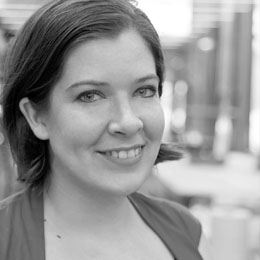
we ask idsa international design conference 2017 speakers three questions.
in keeping with the theme of this year’s isda international design conference: design IS business, we asked conference speakers three questions.
>> name a business book that you feel every industrial designer should read and why?
max burton idsa / ceo and chief designer / matter / 18august 2:00-4:00 rapid fire sessions 
i don’t think industrial designers should read books on business, it distracts them from what they need to focus on – being creative. as a successful business owner, i empower my very experienced managing director, who has an mba and 25 years running businesses to advise me.
ti chang idsa / co-founder and vp of design / crave / 18august 2:00-4:00 rapid fire sessions (8 min talks) 
i do not read business books. only use it as a reference when you come across problems that you need to solve, otherwise they will just overwhelm you with problems you do not yet have.
david dombrowski idsa / director, industrial design & innovation / pfizer consumer healthcare /
17aug 5-6pm panel / business of corporate design studios

life is good: the book by bert jacobs and john jacobs. in this entrepreneurial and start up world we live in, industrial designers are poised to want a piece of designing it. we must all stay optimistic as life throws challenge after challenge at us. i found this book to keep me grounded with its beautifully crafted whit around 10 superpowers. the book is the autobiography of the company life is good as told by the two brothers that started the company. as they put it “how to live with purpose and enjoy the ride”.
liam hawry / director of industrial design–packaging / studio one eleven / 17august 2:00-4:00pm rapid fire sessions
creativity, inc. describes the story of and methodology at pixar. it’s filled with messages about how to prioritize and champion and manage the creative process, of course with amazing results to prove it.
chris kaye idsa / vp of research & technical innovation / us endoscopy / 17august 9:00-9:30am the dichotomy of design and business 
i don’t know if it qualifies as a business book, per se, but one i recommend is thinking fast and slow by daniel kahneman. it is an excellent insight into our perceptions and what influences our decision making processes. improving both our self-awareness and the thought processes of others can assist greatly as we try and determine needs and their optimal solutions. another more traditional business book is dealing with darwin by geoffrey moore. i like the way it deals with types of innovation and markets opportunities and how they are judged and prioritized from a business perspective which can be a significant assistance to designers.
tsai lu liu, idsa / department head, graphic and industrial design / north carolina state university / 17august 2:00-4:00pm rapid fire sessions
designing for people by henry dreyfuss, one of the founders of american industrial design and the first president of idsa. the human/customer-centered design/business philosophy established in this book is as relevant and refreshing today as 60 years ago when the book was written.
evan macdonald / branding and design / freefly systems / 17august 2:00-4:00pm rapid fire sessions 
creativity inc by ed catmull. he’s the president of pixar and disney animation studios and talks about how creativity should function in business. pixar is a nearly flawless example of how creativity and business should work together.
lisa marks idsa / assistant professor of technology and applied design / berea college / 17august 2:00-4:00pm rapid fire sessions 
it may be cliche, but i love how to win friends and influence people by dale carnegie. at its root, it talks about how external stimuli effects human behavior, something that is great to know as a designer. i’m also a bit of an introvert, so advice on networking and meeting people effectively is always welcome.
john suh /
vice president
/ hyundai ventures / 17aug 5-6pm panel business of corporate design studios 
creativity, inc. by ed catmull. great stories about pixar and how they grew from a small group to a major animation studio. of the many stories, tells of the need for leaders to be surrounded by a group of trusted peers whose role is to be a truth teller. ed calls this group “the brain trust.”
nate young / svp of design and ideation / newell brands / 17aug 11:30-12:00 the best way for design to become a brand is not to force it
the fountainhead by ayn rand. why: on one hand, it challenged common orthodoxy surrounding design and creativity at the time. it is a timeless struggle. on the other hand, it demonstrated the stupidity of a philosophy taken too far.
>> name an industrial design book that every business executive should read and why?
ti chang idsa / co-founder and vp of design / crave / 18august 2:00-4:00 rapid fire sessions
art of innovation by tom kelley / the user experience is key. this book helps people of the design industry view innovation from high level user experience perspective.
max burton idsa / ceo and chief designer / matter / 18august 2:00-4:00 rapid fire sessions
the nature and art of workmanship by david pye / this book was required reading for students for my undergraduate degree in england. the book communicates that good design requires an understanding of making, materials and craftsmanship. this is important not only for the quality of the end result , but also for the process of getting there. throughout my career i have made sure that i involve making and prototyping as an intrinsic part of my design process. executives need to value creative exploration and understand that with most great products, the early stages are fuzzy… introducing physical prototypes early on in the creative process turns abstract ideas and thinking into something tangible and actionable. it also allows all key contributors including executives to influence the creative process.
tsai lu liu, idsa / department head, graphic and industrial design / north carolina state university / 17august 2:00-4:00pm rapid fire sessions
designing for people by henry dreyfuss / one of the founders of american industrial design and the first idsa president. the human/customer-centered design/ business philosophy established in this book is as relevant and refreshing today as it was 60 years ago.
chris kaye idsa / vp of research & technical innovation / us endoscopy / 17august 9:00-9:30am the dichotomy of design and business
designing for people by henry dreyfuss is a little dated, but remains a classic. it covers a multitude of markets and helps drive home the design thinking, problem solving approach, and focus. there are numerous examples of project successes, challenges and even some ironic twists and mistakes along the way.
liam hawry / director of industrial design–packaging / studio one eleven / 17august 2:00-4:00pm rapid fire sessions
the design of everyday things by donald norman / classic little book that exposes how much impact the interactions we have with man-made objects have on our overall experience of the world and perceptions about them.
nate young / svp of design and ideation / newell brands / 17aug 11:30-12:00 the best way for design to become a brand is not to force it
beautiful thing by robert clay / why: perfect design primer.
evan macdonald / branding and design / freefly systems / 17august 2:00-4:00pm rapid fire sessions
my previous answer – creativity inc by ed catmull. that book would be a big help to opening business execs to the power of creativity in business. in the interest of not recycling my previous answer, lets go with the design entrepreneur by steven heller. or the classic from don norman: the design of everyday things. is that a cop out?
david dombrowski idsa / director, industrial design & innovation / pfizer consumer healthcare / 17aug 5-6pm panel / business of corporate design studios
let my people go surfing by yvon couinard and naomi klein. a brilliant book about the growth of the privately held company patagonia. the growth of culture within a company in which design played a major role in the development of its products. the book is complete from all aspects of how patagonia became the company it is today.
lisa marks idsa / assistant professor of technology and applied design / berea college / 17august 2:00-4:00pm rapid fire sessions
lightness: the inevitable renaissance of minimum energy structures by adriaan beukers and ed van hinte. while at first glance this book is primarily for giant design nerds like myself, it also speaks to how material and design decision can influence the way the world works, from transportation to business decisions.
john suh / vice president / hyundai ventures / 17aug 5-6pm panel business of corporate design studios
the physics of life by adrian bejan. while this may not be a traditional industrial design book, it does deal with design in nature. it deals with a law of nature, called the constructal-law, which states that for a finite-sized (not infinitely large and not infinitesimally small) to live (to persist in time), it must change its design (configuration) to allow greater access to the things moving through it.
>> steve jobs was influenced by calligraphy. what surprising class or practice has influenced your work?
ti chang, idsa / co-founder and vp of design / crave / 18august 2:00-4:00 rapid fire sessions (8 min talks)
furniture design was incredibly helpful in honing my aesthetic sensitivities and my design values. a chair is just a chair until you have to figure out what makes that chair your chair that defines you as a designer. talk about soul-searching and personal design life crisis!
max burton, idsa / ceo and chief designer / matter / 18august 2:00-4:00 rapid fire sessions (8 min talks)
many industrial designers i know also play instruments and i play the classical guitar. i find the physical interaction with a physical instrument a visceral experience that refreshes my enjoyment with the tangible world in a digital era. the act of playing well requires skill, artfulness and interpretation, similar skills to being an industrial designer. a good guitar itself is a piece of fine craftsmanship. there is a symbiotic relationship between the guitar maker, the guitar and the player. great guitars can cost a small fortune and perhaps ironically the best ones are still made completely by hand by one person.
[ idsa ] [ #idsa17atlanta ]





